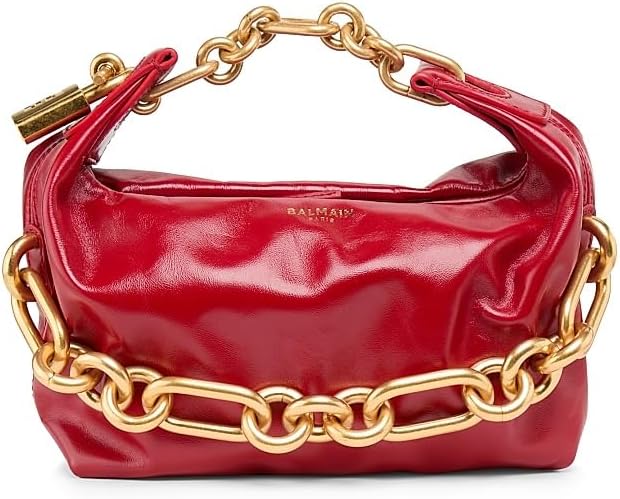The Origins of Paul Smith
Paul Smith, a renowned name in British fashion, was founded in the early 1970s, emerging from the modest beginnings of its visionary designer. Paul Smith, born in Nottingham, showcased an early interest in fashion, which led him to leave a career as a professional cyclist to pursue his passion for tailoring. His journey began in a small shop where he operated primarily as a tailor, diligently crafting unique garments that reflected his inventive spirit and attention to detail.
The brand’s inception can be traced back to 1970, when Smith opened his first boutique in Nottingham. This establishment quickly gained a reputation for quality craftsmanship combined with a fresh, innovative design ethos. It was here that Smith started to cultivate his signature style, which elegantly blended traditional tailoring techniques with an avant-garde twist. His approach diverged from conventional British tailoring, favouring a relaxed fit and introducing playful elements, such as his iconic stripes, to the aesthetic.
During the 1970s, the Paul Smith brand gradually expanded, gaining acclaim for its distinctive blend of classic and contemporary styles. Key milestones in these formative years include the introduction of menswear collections that garnered enthusiastic responses from fashion critics and consumers alike. The debut of the women’s line further broadened the brand’s appeal, establishing a solid identity rooted in meticulous workmanship and a vibrant visual narrative. This evolution not only unlocked new market segments but also solidified Paul Smith’s place in the pantheon of British fashion houses. The hallmark attention to detail and unique designs allowed Paul Smith to carve out a niche that would resonate throughout his career, paving the way for the illustrious future of the brand.
Tailoring with a Twist: The Philosophy Behind Paul Smith’s Designs
Paul Smith’s design philosophy can be succinctly described as “tailoring with a twist,” a concept that skillfully blends traditional British tailoring with modern creativity. Since his early days, Paul Smith has pioneered an approach that elevates classic menswear by introducing unexpected elements, setting the brand apart in the crowded landscape of fashion. This innovation stems from an appreciation for both heritage and contemporary style, which is reflected in the meticulous attention to detail that characterizes his collections.
One of the hallmarks of Paul Smith’s designs is the playful incorporation of vibrant colors. While conventional British tailoring often adheres to muted tones and conservative palettes, Smith dares to infuse garments with bold hues. This propensity for color extends beyond the exterior; for instance, unconventional linings or contrasting stitching can often surprise wearers, ultimately creating a striking visual impact. Such techniques not only enhance the design but also serve to surprise and delight the wearer, establishing a deeper emotional connection with the garment.
Furthermore, Paul Smith’s affinity for eclectic patterns contributes significantly to his unique aesthetic. By infusing traditional styles with unexpected motifs—such as floral prints or geometric designs—he challenges the status quo of tailoring. This approach not only rejuvenates classic silhouettes but also appeals to a modern audience seeking individuality and self-expression through their clothing choices. The juxtaposition of familiar and novel elements allows Smith to maintain a timeless quality while remaining relevant in a fast-evolving fashion world.
In conclusion, Paul Smith’s design philosophy encapsulates a perfect marriage of tradition and innovation. By mastering the art of “tailoring with a twist,” he has redefined the expectations associated with British menswear and established a brand ethos that celebrates creativity, individuality, and unexpected charm.
The Signature Stripes: Iconic Fashion Statement
Paul Smith’s signature stripes have become an integral part of the brand’s identity, representing a blend of classic British tailoring and contemporary flair. The origins of this motif can be traced back to Smith’s innovative approach to menswear in the late 1970s. Initially, the stripes were adopted as a playful twist on traditional patterns, embodying Smith’s desire to infuse a sense of individuality into formal wear. As the brand evolved, these stripes gained prominence, transcending mere design elements to become symbolic of a rebellious spirit within the realm of tailored clothing.
Culturally, the signature stripes resonate not only within the fashion industry but also in the broader context of British style. They encapsulate the essence of British heritage while simultaneously pushing the boundaries of modern aesthetics. As the stripes became more closely associated with Paul Smith, they also reflected a shift in menswear, where personal expression began to take precedence over rigid adherence to classic styles. This evolution has allowed the stripes to flourish, with their various iterations highlighting the versatility of the collection.
Notably, Paul Smith’s striped shirts have garnered significant attention, marking their place as a staple in contemporary menswear. They exemplify how a simple pattern can elevate an entire outfit, appealing to those who appreciate both sophistication and whimsy. The playful use of color and varying stripe widths have allowed these shirts to dominate the wardrobes of style-conscious individuals, solidifying their status as a quintessential representation of the Paul Smith brand. Through repeated reimagination, the signature stripes serve as a reminder of Smith’s commitment to both quality craftsmanship and creative expression.
Legacy and Influence: Paul Smith in Contemporary Fashion
Paul Smith’s enduring legacy in the fashion industry stands as a testament to his innovative approach to tailoring and design. His signature stripes and playful use of color have not only characterized his own brand but have also set benchmarks for contemporary designers looking to infuse personality into their collections. As a pioneer of British style, Smith has influenced a generation of fashion talents, encouraging them to embrace eclecticism and individuality in their work.
The brand’s commitment to high-quality craftsmanship and attention to detail reflects its strong foundation in traditional tailoring. However, what makes Paul Smith particularly significant is how it has successfully combined classic techniques with modern aesthetics. By adopting a fresh perspective on formal wear, the brand has taught other designers the importance of versatility and adaptability within their collections. This embrace of duality—where classic silhouettes interact with unexpected colors, patterns, and textures—continues to inspire many in the industry.
In adapting to ever-changing fashion trends, Paul Smith has consistently found ways to stay relevant without compromising its core values. The brand has smartly navigated market shifts by integrating sustainable practices and collaborative efforts, appealing to a socially conscious consumer base. By doing so, it has cemented its place not just as a brand of clothing, but as a pillar of cultural conversation within the fashion sphere.
Looking to the future, Paul Smith appears well-positioned to maintain its impact. As the fashion landscape evolves, the brand’s blend of tradition and innovation offers a model for success. The continuous exploration of new materials and techniques while remaining true to its heritage ensures that Paul Smith will continue to resonate with both loyal customers and new generations of fashion enthusiasts in the UK and globally.














